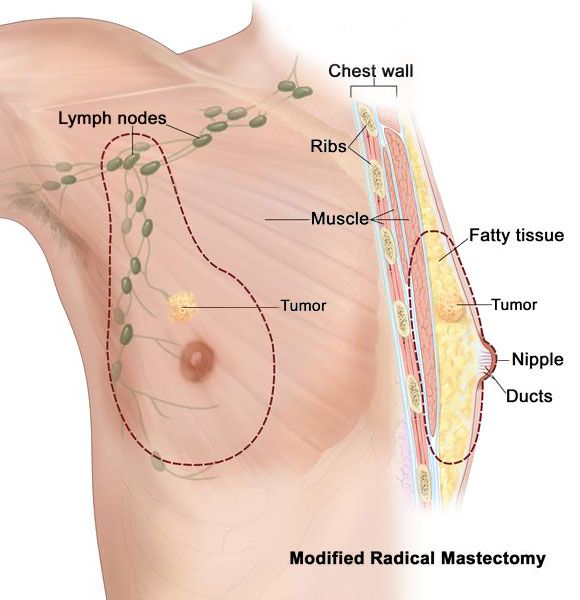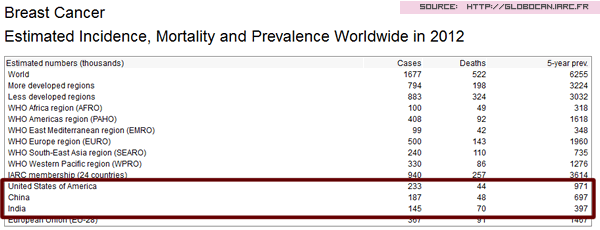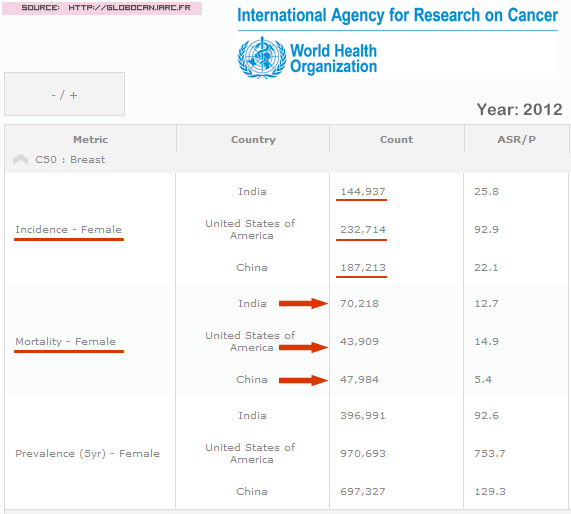
Breast cancer control
WHO promotes breast cancer control within the context of comprehensive national cancer control programmes that are integrated to noncommunicable diseases and other related problems. Comprehensive cancer control involves prevention, early detection, diagnosis and treatment, rehabilitation and palliative care.
Raising general public awareness on the breast cancer problem and the mechanisms to control as well as advocating for appropriate policies and programmes are key strategies of population-based breast cancer control. Many low- and middle-income countries face now a double burden of breast and cervical cancer which represent top cancer killers in women over 30 years old. These countries need to implement combined strategies that address both public health problems in an effective and efficient way.
COMPARISON 01: INDIA v/s US v/s CHINA
For the United States, for the year 2012:
- 232,714 women were newly detected wth breast cancer
- 43,909 women died of breast cancer
- 232714 / 43909 = 5.29 = round it off to 5 or 6. So roughly, in the US, for every 5 or 6 women newly diagnosed with breast cancer, one lady is dying of it.
For China, for the year 2012:
- 187,213 women were newly detected wth breast cancer
- 47,984 women died of breast cancer
- 187213 / 47984 = 3.90 = round it off to 4. So roughly, in China, for every 4 women newly diagnosed with breast cancer, one lady is dying of it.
For India, for the year 2012:
- 144,937 women were newly detected wth breast cancer
- 70,218 women died of breast cancer
- 144937 / 70218 = 2.06 = round it off to 2. So roughly, in India, for every 2 women newly diagnosed with breast cancer, one lady is dying of it.


It is not that easy that you can be a poet or sing a song and just living with a smile like the film Anand. In the film, they were not talking about treatment.
What is Breast Cancer?
A cancer that forms in the cells of the breasts. breast cancer include a lump in the breast, bloody discharge from the nipple and changes in the shape or texture of the nipple or breast.

It is not only found in female but also found in male.

Its treatment depends on the stage of cancer. It may consist of chemotherapy, radiation, hormone therapy and surgery.
Symptoms
Requires a medical diagnosis
Symptoms of breast cancer include a lump in the breast, bloody discharge from the nipple and changes in the shape or texture of the nipple or breast.
People may experience:
Breast:
bloody nipple discharge, discomfort, inverted nipple, lumps, nipple discharge, or sore nipple
Skin:
ulcers or redness Also common: cancer-related fatigue, swollen lymph nodes, or weight
Major treatment modalities
This requires a careful selection of one or more of the major treatment modalities – surgery, radiotherapy and systemic therapy – a selection that should be based on evidence of the best existing treatment given the resources available.
Surgery alone, and sometimes radiation alone, is only likely to be highly successful when the tumour is localized and small in size. Chemotherapy alone can be effective for a small number of cancers, such as haematological neoplasms (leukaemias and lymphomas), which can generally be considered to be widespread from the outset. Combined modality therapy requires close collaboration among the entire cancer care team.
More to Read:
http://www.breastcancer.org/symptoms/understand_bc/statistics
http://www.breastcancerindia.net/statistics/stat_global.html
